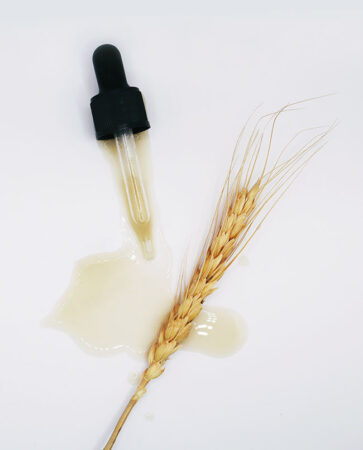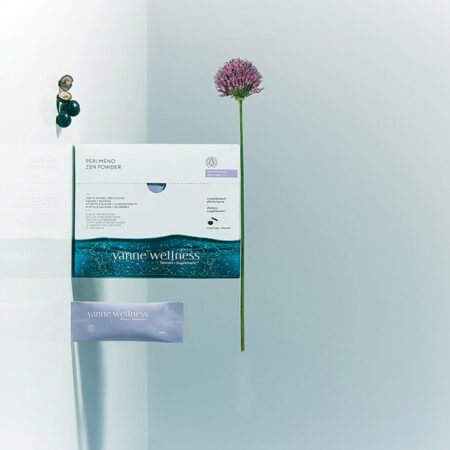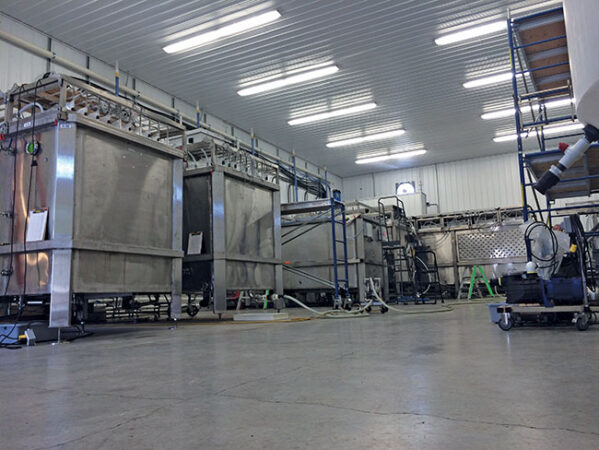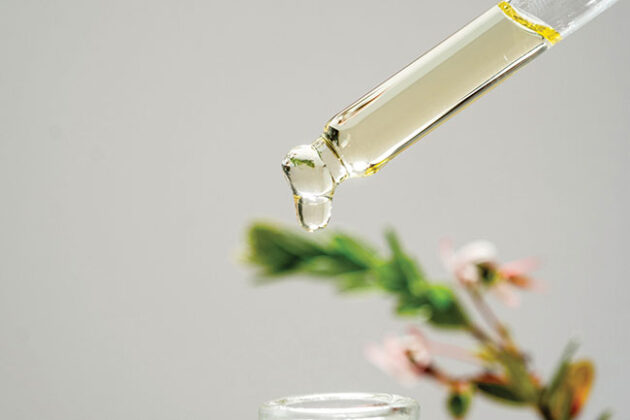
Food ingredients in the cosmetic space
October 31, 2024
By Jane Dummer
The cosmetics industry is embracing nutrient-dense food ingredients to create clean products
 The Upcycled Beauty Company uses brewer’s spent grain to create its Barley Toniq, a skin soothing active. Photo © The Upcycled Beauty Company
The Upcycled Beauty Company uses brewer’s spent grain to create its Barley Toniq, a skin soothing active. Photo © The Upcycled Beauty Company Currently, food ingredients are not mainstream practice in the cosmetics industry in North America, but it’s gaining momentum. The evolving interest in including nutrient-dense food ingredients in cosmetic formulations reflects consumers’ acceptance that what is healthy for the inside is beneficial for the outside. These ingredients are typically high in antioxidants, vitamins and minerals, which play a vital role in health and wellness.

Yanne Wellness uses food grade ingredients like inulin, blueberry extract and acerola to create skincare products. Photo © Yanne Wellness
Grant Smith, president and CEO, Pond Technologies, explains, “To maintain your beauty from within, it is essential that you nourish your body with nutrients that activate optimal health.”
Pond Technologies uses a patented technology to grow algae in large photobioreactors using light and water. They focus on two species—phycocyanin (from spirulina blue-green algae) and astaxanthin (bright red algae).
According to Smith, “Both have profound effects on human cellular health and positively impact the relatively new science of healthspan. Astaxanthin is a potent carotenoid responsible for the bright red colouring of salmon flesh, crustacean shells and flamingo feathers. Astaxanthin research demonstrates a wide variety of health benefits, including neuroprotection, immune response and eye health. When it comes to skin health benefits, there are several including improvement in acne, skin moisture and elasticity, wrinkle formation reduction, melanin synthesis and photoaging inhibition.”

Pond Technologies grows algae in large photobioreactors to create ingredients for nutraceuticals and cosmetic companies. Photo © Pond Technologies
Upcycled ingredients in cosmetics
While upcycling is not a common method in the cosmetics industry worldwide, it is increasing, especially in the U.K. and Europe as the industry moves towards sustainability.
Fruit d’Or, which is interested in the ‘beauty from within’ trend and the skin microbiome, is one of the world’s largest processors of organic cranberries and wild blueberries.

Fruit d’Or’s upcycled cranberry seed oil can be used to develop serums, hair care products and moisturizers. Photo © Fruit d’Or
“We fully utilize every part of the fruits we grow, constantly seeking new benefits from each part of the berry. Cranberry seeds generated by the company’s dried fruit production are upcycled to extract the oil. This reduces residual materials at the company’s production facilities. Cranberry seed oil is a highly beneficial cosmetic ingredient due to its rich essential fatty acids, antioxidants, anti-inflammatory properties and ability to hydrate and protect the skin,” explains Annie Bouchard, senior brand manager, Fruit d’Or. “Also, our cranberry and wild blueberry fruit powders are excellent for the cosmetic industry due to their high antioxidant content, vitamins, and natural exfoliating properties, which help protect, nourish and rejuvenate the skin.”
Fruit d’Or’s upcycled Cranberry Seed Oil CranOra is one of the most popular customer requests due to its versatility. The oil is refined, deodorized, cold-pressed and COSMOS certified (a certifying body with standards for organic and natural cosmetics to be commercialized worldwide). It is suitable for many cosmetic formulations, such as serums, hair care products and moisturizers.
The Upcycled Beauty Company is another company that’s on a mission to reduce food waste.
“We’re out to prove that the beauty industry can thrive solely using upcycled materials—from ingredients to packaging. To help create industry awareness we have initiatives such as our Upcycled Ingredient Directory and no MOQ policy, allowing customers to order just what they need to further reduce waste within the supply chain,” says Anna Crovetto, community lead, the Upcycled Beauty Company.
Their ingredient portfolio is made entirely from upcycled plant-based leftovers that are too good to waste. Some of their ingredients from food origin include Faba Toniq, Barley Toniq and Gin Toniq. The idea for Faba Toniq was inspired by the water left in a can or jar of cooked chickpeas. The Upcycled Beauty Company captures and processes the fresh chickpea liquid and adds a COSMOS-approved preservative to the Toniq. This gives the upcycled Faba Toniq an all-natural and vegan hair styling active, which is shown to retain curls when used in both leave-in and rinse-off applications.
“Our zero-waste ingredients offer forward-thinking brands an opportunity to create innovative beauty products that make better use of the precious resources around us, without compromising quality or efficacy,” highlights Crovetto.
Uniting supplements with cosmetics
In the beauty from within trend, there is an overarching approach to combine a supporting ingestible (supplement and/or food) with the topical.
Bridgitte Dempsey Klein, founder, Yanne Wellness, explains, “The trend coming from France called ‘In and Out Beauty’ combines food supplements with cosmetics. This is exactly what Dempsey’s own nutricosmetics brand, Yanne Wellness, does. We created a brand that celebrates the importance of food ingredients for inner health and general well-being. Certain ingredients such as algae are used in both food supplements and cosmetics. Consumers appreciate a good quality ingredient that can span across both categories—you cannot look good if you do not first, feel good. The inner health is reflected on the outside.”
This article was originally published in the Aug./Sept. 2024 issue of Food in Canada.